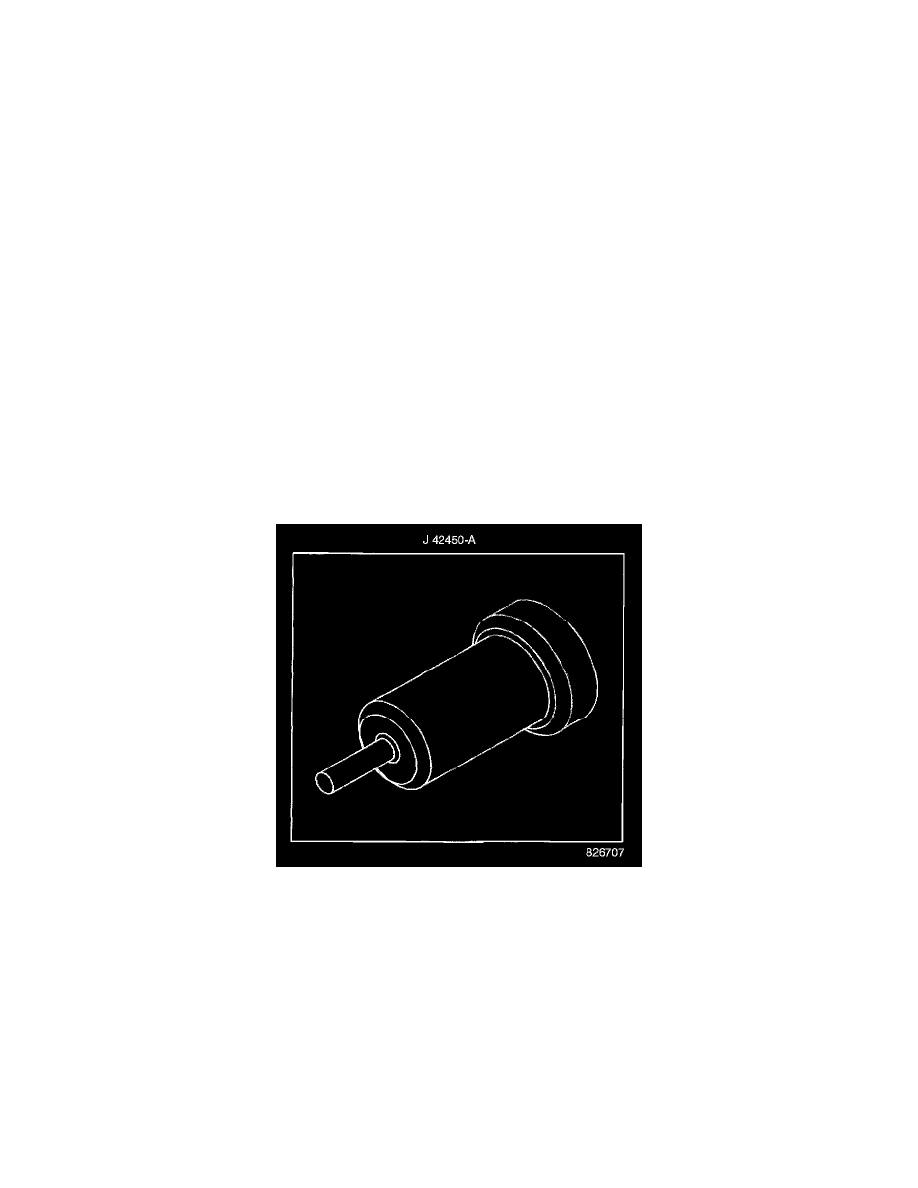Grand AM V6-3.4L VIN E (2001)

clean the area so that the print is visible). This indicates the correct brake pads have been previously installed. The brake pads contained in Front Pad
Kit, P/N 18044437 are the only brake pads that should be used on these vehicles. If the number 1417 is not present, or if the number is not legible,
replace the brake pads. If the correct pads were previously installed, verify the brake pad thickness. If the brake pad friction material thickness is 4.6 mm
(0.18 in) or greater, re-use the pads. If the friction material thickness is less than 4.6 mm (0.18 in), install new brake pads contained in Front Pad kit, P/N
18044437.
If the rotor thickness is less than 25 mm (0.98 in), install a new rotor. If rotor thickness is greater than 25 mm (0.98 in), refinish the rotor.
Replace existing front brake rotors and pads, if necessary, with new components indicated in the table following the applicable Service Manual
procedures and the service guidelines contained in Corporate Bulletin Number 00-05-22-002.
Important
^
The brake pad with the wear indicator must be installed in the inner position (against the piston in the caliper). When properly installed. the wear
indicator will be pointing up with the caliper installed on the car (Refer to Corporate Bulletin Number 01-05-23-005).
^
If the pad with the wear indicator must be installed in the outboard position, reduced front brake lining life or interference between the compact
spare tire and brake caliper may occur
^
Anytime a new or refinished rotor is installed on a vehicle, the rotor must have.040 mm (.0015 in) or less of lateral run-out. This specification is
important to prevent comebacks for brake pulsation and is a tighter specification than specified for other vehicle models.
GM has approved a new technology for the correction of lateral run-out on new or refinished rotors. This new method is called *"Brake Align(R)". It
will allow the technician to meet the .040 mm (.0015 in) or less requirement for lateral run-out by installing a specially selected tapered correction plate
between the rotor and the hub (Reference Corporate Bulletin Number 01-05-23-001).
* We believe this source and their products to be reliable There may be additional manufacturers of such products. General Motors does not endorse,
indicate any preference for or assume any responsibility for the products from this firm or for any such items which may be available from other sources.
1.
Machine the existing rotors on an approved, well-maintained brake lathe to guarantee smooth, flat, and parallel surfaces. Replace the rotors if they
do not meet the minimum thickness specification.
DO NOT MACHINE NEW ROTORS.
